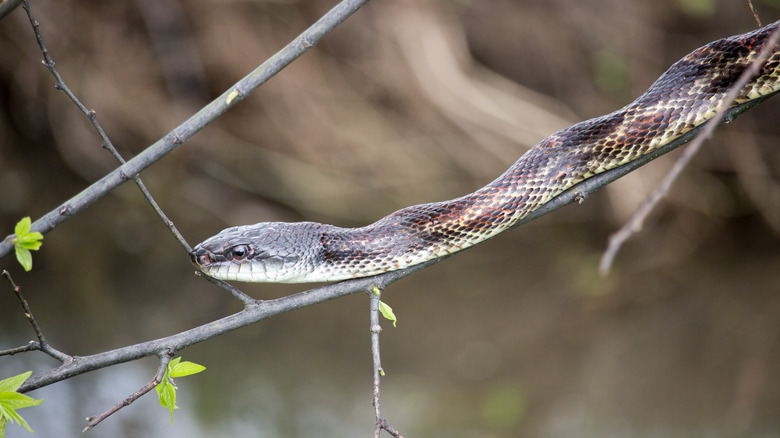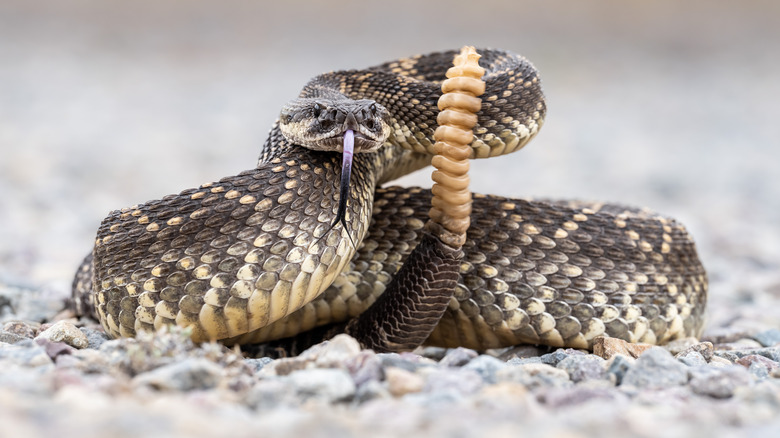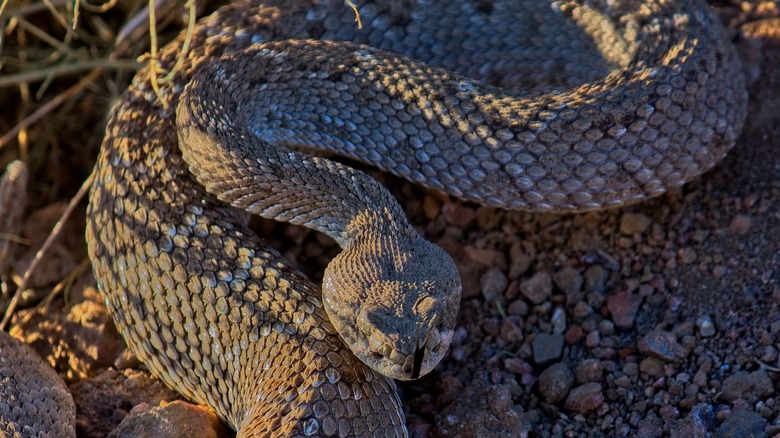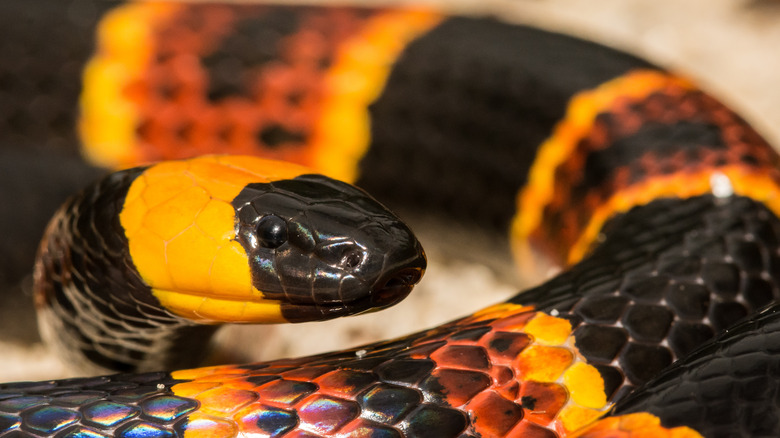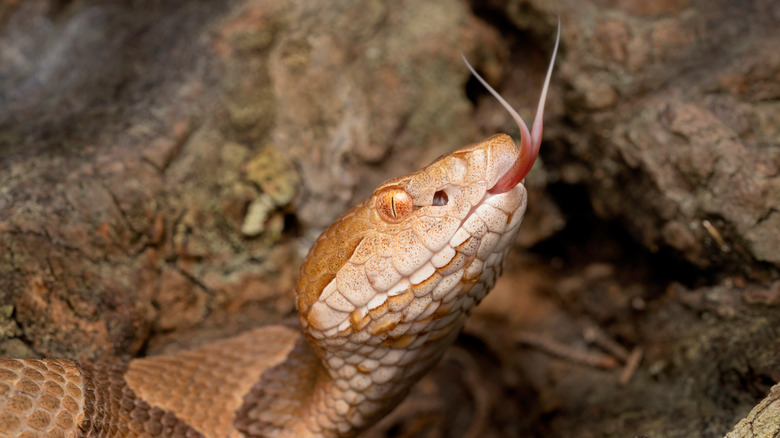How To Tell If A Snake Is Venomous
Snakes are a common concern for anyone who spends time outdoors. This is particularly true during the warmer months when snakes are most active. Why are people concerned with encountering a snake? Most often, it is a fear of being bitten by a venomous species.
To that end, outdoor enthusiasts can take comfort in knowing that while dozens of varieties of snakes are found across North America, only a handful are venomous and considered dangerous to humans. In the United States, only four types of venomous snakes are indigenous – rattlesnakes, copperheads, cottonmouths (also known as water moccasins), and coral snakes. In Canada, the only venomous snakes are three species of rattlesnakes.
Snake bites certainly do occur, but the majority of those are from non-venomous snakes. Bites from venomous snakes are much less common. Deaths from snakebites are even less so. According to the Centers for Disease Control and Prevention, there are fewer than half a dozen deaths from snake bites annually in the U.S. However, there is a possibility of encountering a snake (such as accidentally stepping on one) and possibly being bitten while adventuring outdoors, so it is necessary to be able to tell the difference between venomous and non-venomous snakes in the event a bite does occur. Being able to identify a venomous snake accurately and having the proper emergency supplies on hand can save your life and minimize any long-term damage or injuries.
What is a venomous snake?
While all snakes are capable of biting humans, not all of them can inject damaging toxins. Only venomous snakes are able to inflict this type of injury. Remember that snakes use their venom as a defense mechanism, so they're not looking for a fight unless provoked. So, what is a venomous snake?
In simplest terms, these are serpents capable of injecting a toxin (venom) into prey. It accomplishes this feat with hollow fangs that function a lot like a syringe needle. The intended purpose of this toxin is to immobilize prey. However, when injected into humans, it can cause a variety of maladies, including tissue damage, nerve damage, kidney damage, hemorrhaging, or even death.
Unfortunately, there is no single foolproof way to tell the difference between venomous and non-venomous snakes. Some non-venomous serpents have features seen in venomous — and some venomous snakes don't have all the tell-tale signs. That said, there are some ways to help identify the difference in danger level between snakes you may encounter if you are unsure of their species. Again, do bear in mind there are some notable exceptions to some of these rules. A good rule of thumb is to give all snakes plenty of space and not to handle any of them found in the wild.
The head shape of a snake may point to danger
Three of the four types of venomous snakes found throughout the U.S. are pit vipers, coral snakes being the lone exception. This family of snakes has a very distinctive, triangular-shaped head. Additionally, pit vipers have two holes — or pits — on their snout, hence the name. So, if you see a snake with this type of head shape, you should assume it is venomous.
It should be noted that some non-venomous snakes, such as the bull snake, will at times flatten their heads to make themselves appear more dangerous when they feel threatened. This can lead to some confusion for someone trying to make a determination based only on head shape. However, again, it is best to err on the side of caution. It is much safer to assume a non-venomous snake is venomous than vice-versa.
As far as coral snakes are concerned, though they do not have the triangular head nor the pits of a pit viper, they do have a black snout. This helps distinguish them from other, non-venomous species with similar color patterns, most notably the king snake.
Color can be a clue to snake identification
Color can be misleading in some snake species. Water moccasins, for example, can range from jet black to mottled brown. Additionally, many non-venomous species have very similar coloration and patterning to venomous species like moccasins and rattlesnakes.
The one venomous species that does not vary in color, however, is the coral snake. While there are several varieties of coral snakes found in the U.S., they all have the same coloration and pattern. "Red on yellow kills a fellow" or some other variation of that phrase is commonly used to differentiate a venomous coral snake from other colorful yet non-venomous species. Another clue that can be gleaned from a snake's skin has to do with its scale pattern. The underbelly of a snake will indicate whether it is indeed venomous or not. If the snake has two rows of scales on the underside of its tail section, it is not venomous. A single row of scales on the tail section indicates the snake is venomous.
Unfortunately, this is really not something that can be easily done when encountering a live snake. However, skin sheds can also reveal the potential danger of nearby snakes. An intact snake skin shed will show the scale pattern of the snake that left it and can alert you to the possibility of a venomous snake in the area, whether that be hiding in your yard or just off a hiking trail.
Eyes indicate dangerous snakes
Another way to help identify a potentially dangerous snake is to look it in the eye — literally. Many venomous snakes, particularly vipers such as copperheads, rattlesnakes, and moccasins have narrow pupils, often referred to as slit eyes or cat eyes. Of the venomous types of snakes in the U.S., the coral snake is once again the exception. Unlike the vipers, coral snakes have round eyes. But again, they are easily identified by the color pattern.
The downside to trying to distinguish if a snake is venomous by its pupil shape is you have to get close enough to see the snake's relatively small eyes. This alone could add to the possible danger of being bitten. However, if you think you see cat eyes on a snake, assume it is venomous.
It is also important to remember these guidelines are for snakes that are indigenous to the U.S. and Canada. Worldwide, there are a number of venomous species that do not exhibit the slit eyes, including some of the most dangerous snakes on earth. So, it is always best to be aware of potentially dangerous snakes and how to identify them when embarking on adventures outside the U.S. and Canada.
What to do if you are bitten by a snake
If bitten by a venomous snake, having the proper emergency supplies and acting quickly can save your life as well as minimize any long-term damage or injuries. While deaths are relatively rare, they do happen and are more likely without quick first aid and treatment. Additionally, amputations and long-term muscle and tissue damage are very real possibilities. Knowing what to do and, just as importantly, what not to do can go a long way to ensuring a successful recovery.
As detailed by the Centers for Disease Control and Prevention, the things you should or shouldn't do in the event of a snakebite include:
- Get medical attention as soon as possible, even if you believe the snake to be non-venomous.
- Do not attempt to capture or kill the snake.
- Take a photo of the snake if possible to help medical professionals identify the snake and provide the proper care.
- Begin first aid immediately.
- Do not cut the wound open or attempt to suck out the venom.
- Wash the bite area.
- Do not apply a tourniquet.
- Cover the bite with a gauze or clean cloth.
- Do not put ice on the bite area.
- Do not use alcohol or any pain relievers such as ibuprofen, naproxen, or aspirin.
